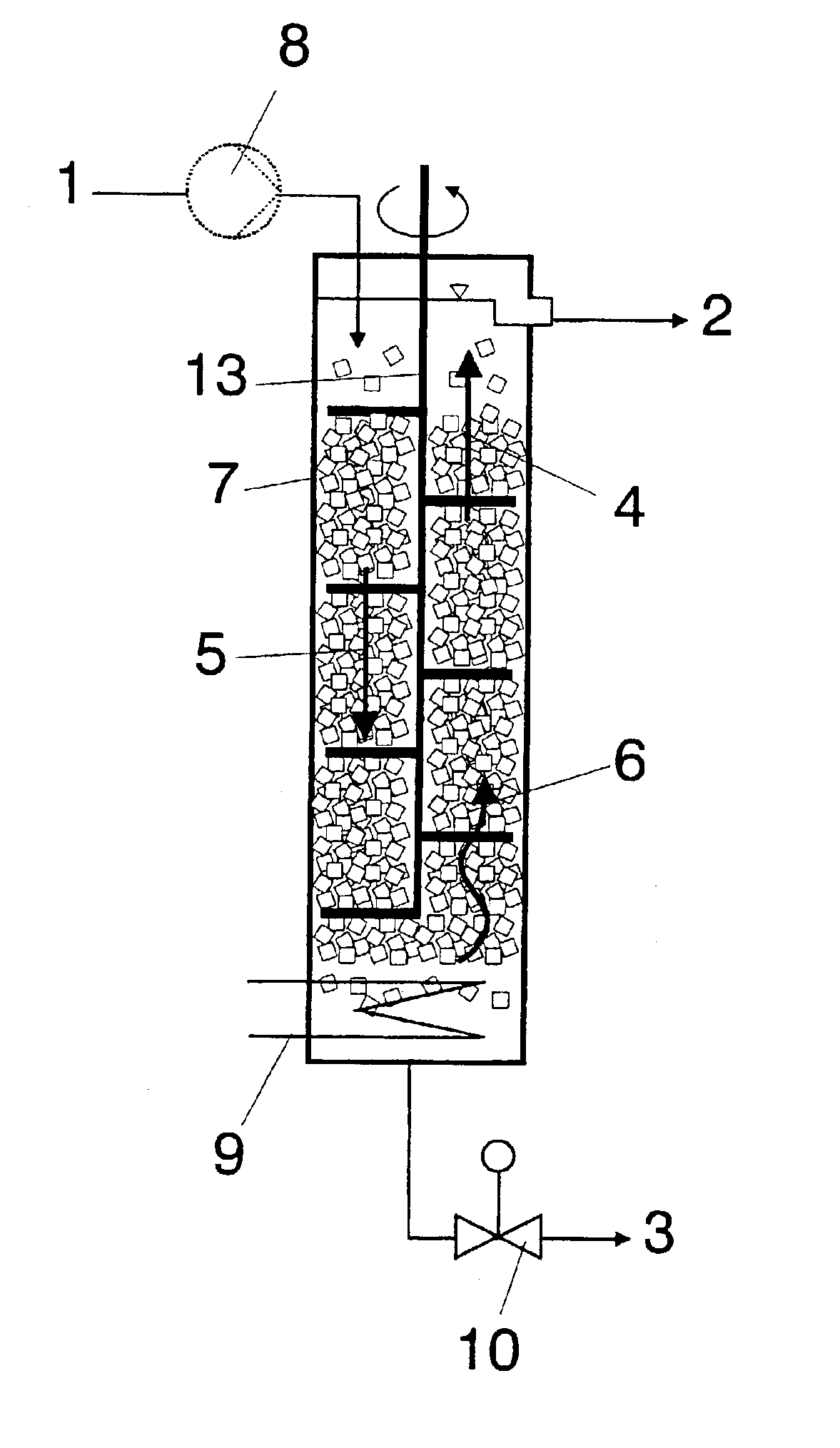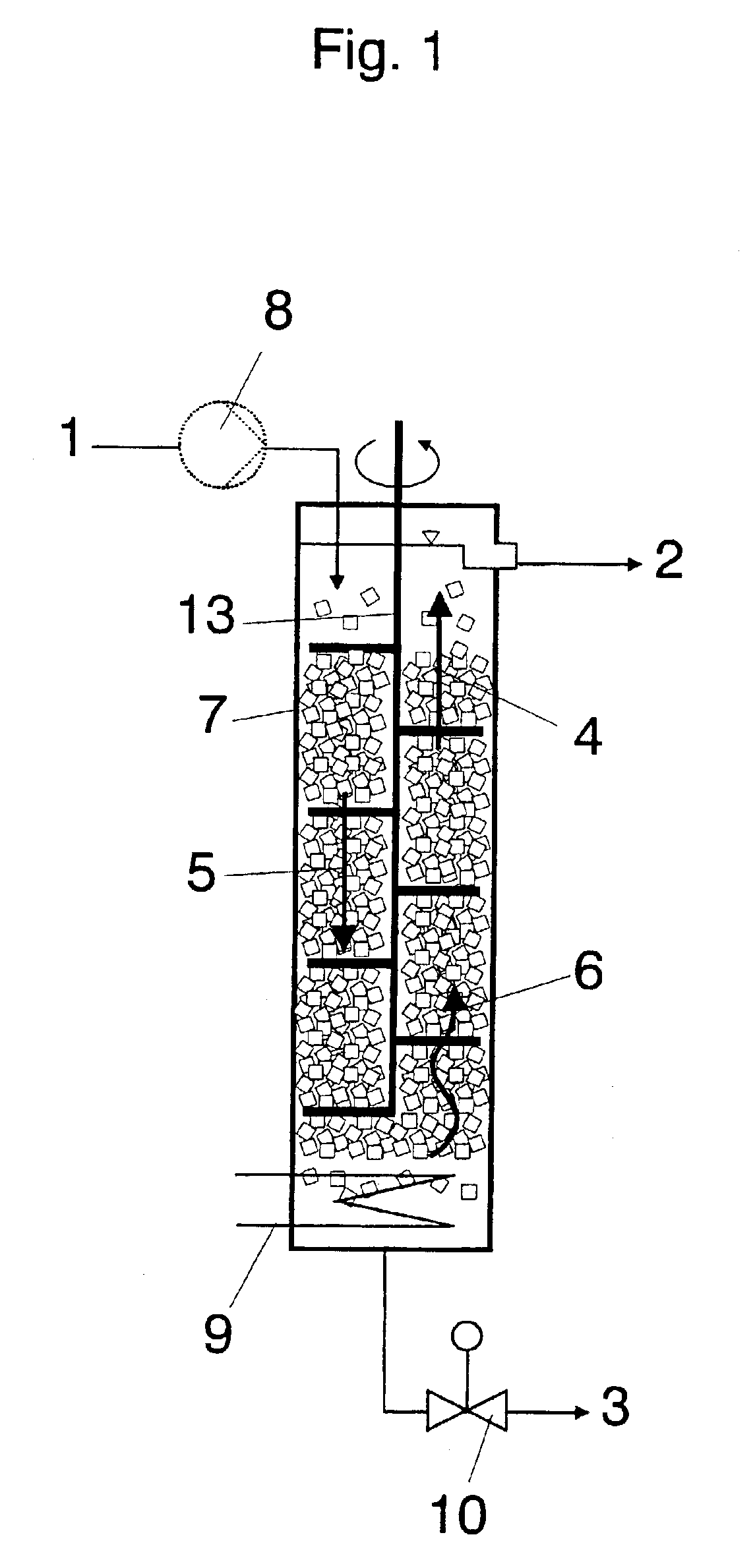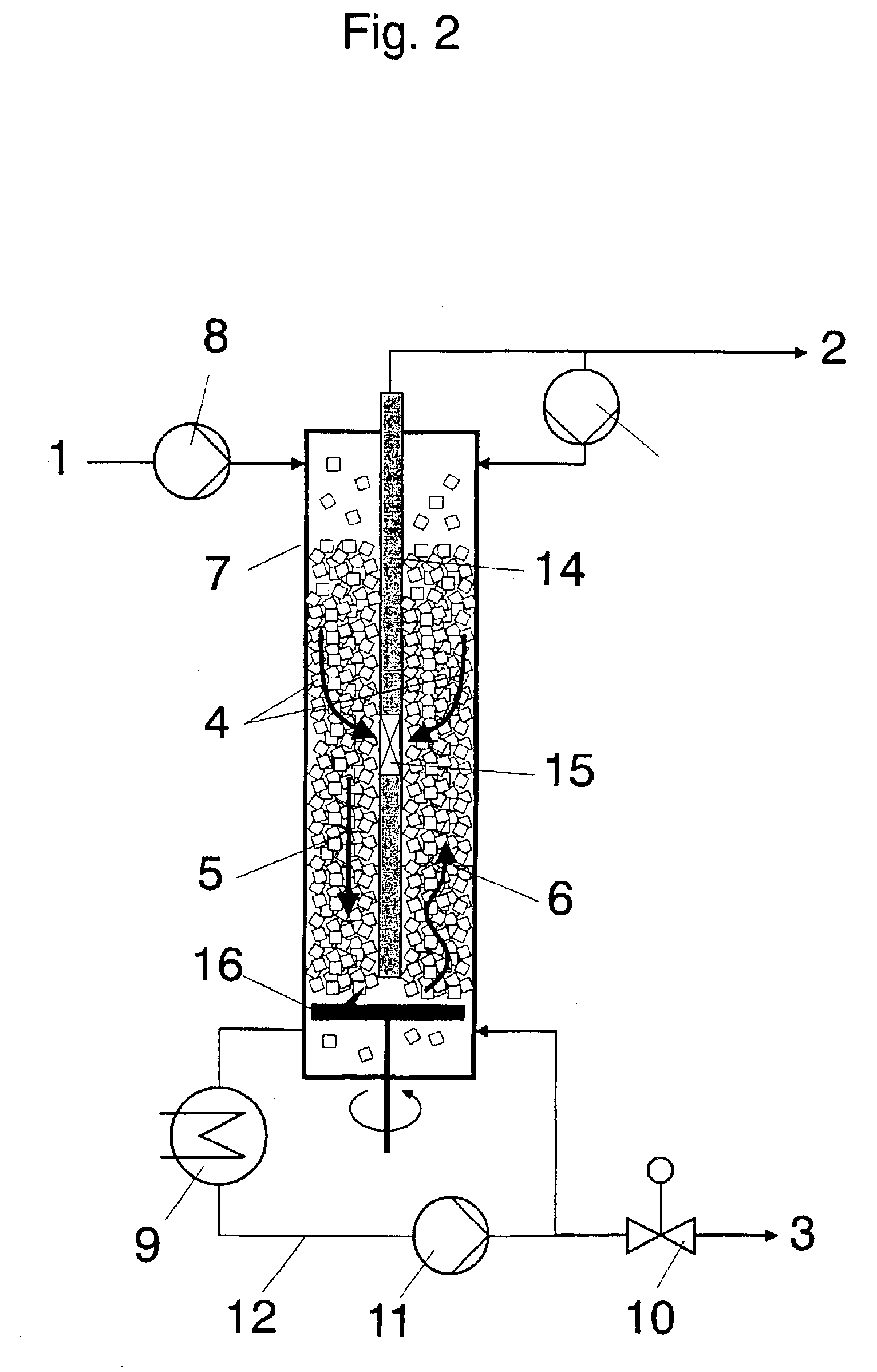Of the components, apart from acrylic acid, contained in the abovementioned crude acrylic acids, most prove to be disadvantageous during the use of crude acrylic acid.
If such a crude acrylic acid were used, for example, for the preparation of esters of C1-C8-alkanols and acrylic acid, the corresponding acetic esters and propionic esters would also be formed in secondary reactions, which reduces the yield of desired acrylic esters, based on the amount of alkanol used.
If the acrylic esters formed in the presence of low molecular weight aldehydes are used for free radical polymerizations, their content of the low molecular weight aldehydes generally has a disadvantageous effect, for example, in that they influence, for example, the
induction time of
polymerization reactions, i.e. the period between reaching the
polymerization temperature and the actual beginning of the
polymerization.
The abovementioned disadvantages are usually also applicable when the crude acrylic acid is used directly as an acrylic acid source in polymerizations.
Acrylic acid sources to be used for the production of superabsorbers (=materials for absorbing water and based on
polyacrylic acid and its salts) are subject in particular to the requirement that they may contain very little diacrylic acid and very little dibenzo-1,4-
thiazine, since both components are undesirable either in the production of superabsorbers (in particular dibenzo-1,4-thiazin presents problems owing to its extremely inhibiting effect on free radical polymerizations in the production of superabsorbers) or in the use of the superabsorbers (superabsorbers are used in particular in the
hygiene sector (e.g. baby's diapers); the final stage of superabsorber production consists as a rule of a high-temperature surface crosslinking; at the crosslinking temperatures used, copolymerized diacrylic acid will be at least partially cleaved (inverse Michael addition) with formation of monomeric acrylic acid; an increased content of monomeric acrylic acid is however not tolerable in this area of use).
The
disadvantage of these separation processes is that they require a large amount of energy, in particular for separating off the components having a similar
boiling point to acrylic acid (e.g. propionic acid), since the procedure has to be carried out with high
reflux ratios and / or with rectification columns having a large number of theoretical plates.
Moreover, the thermal stress generally causes undesirable free
radical polymerization of the acrylic acid in the case of purification processes involving rectification.
The
disadvantage of such a successive procedure is that, in each stage, the heat of
crystallization has to be removed on freezing and supplied again on subsequent melting.
This adversely affects the cost-efficiency of separation processes involving
crystallization.
However, the usually low space-time yield in static
crystallization processes is disadvantageous since, in static melt crystallization, the heat transport and
mass transfer to the deposition surfaces takes place only by free
convection.
The
disadvantage of a purification of crude acrylic acid melts by dynamic layer crystallization is that the purification effect within one crystallization stage with high
impurity contents of the crude acrylic melt is unsatisfactory, and it is for this reason that EP-A 616 998 recommends the use of a combination of static and dynamic layer crystallization for purifying crude acrylic acid melts.
However, the disadvantage of this procedure is that it necessarily requires a plurality of crystallization stages.
Owing to the small specific surface area of the deposited
layers however, the wash effect is not completely satisfactory.
Instead, a combination with static crystallization stages is recommended, which is unsatisfactory owing to the inevitable multistage nature of the procedure.
The disadvantage of such a procedure with purely mechanical separation of crystals and residual melt is that, owing to the remaining residual melt adhering to the crystals, the purification effect achievable in one separation step is unsatisfactory in the case of crude acrylic acid melts.
The disadvantage of the washing method used in DE-A 19926082 is that its purification effect is not completely satisfactory.
This is presumably due in particular to the fact that the contact achieved between crystals to be washed and wash liquid is not completely satisfactory.
However, the disadvantage of these wash liquids is that, on the one hand, the purification effect is not completed satisfactorily and, on the other hand, they result in considerable acrylic acid losses.
Although the purification effect achieved in JP-A 7-82210 with one purification stage is satisfactory, the space-time yield achieved is not.
The disadvantage of this procedure is that it requires the addition of a polar
organic solvent to the crude acrylic acid.
 Login to View More
Login to View More 


